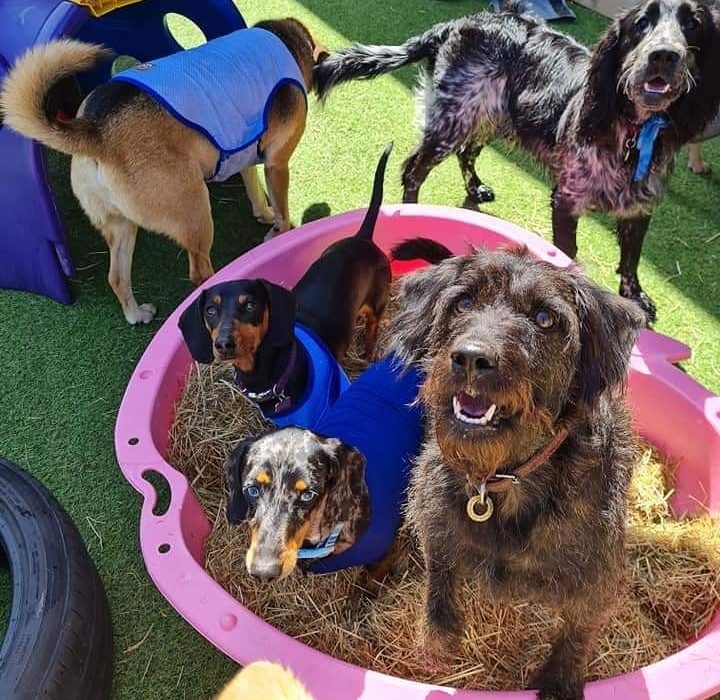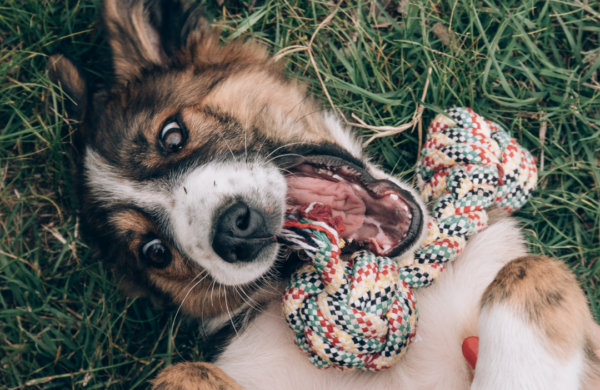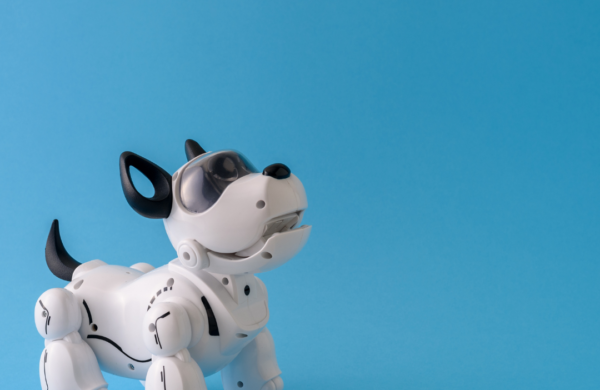Let’s talk frisky business…
Daycare can conjure a whole lot of emotion in your dog, this can range from excitement to anxiety. Each emotion will vary depending on the individual dog and their nature. Neither is right or wrong, simply the emotions that the dogs feel.
As a result of these emotions, we can often see ‘frisky business’ take place in daycare. If you have ever seen your dog mounting or ‘humping’ in daycare, it isn’t always a cause for concern.
Humping, or mounting behaviour, is a normal behaviour that can occur in dogs of all ages, genders, and breeds. It can be a sign of excitement, particularly when it occurs in response to certain stimuli, such as the presence of another dog or person, new smells or sounds, or changes in the dog’s routine.
Humping as a sign of excitement is more common in dogs that are not neutered or spayed, as these dogs may have higher levels of hormones that can contribute to sexual arousal. Excitement can also happen when the dog is playing, and they may hump a toy or a person’s leg as a way of expressing their enthusiasm.
When a good thing turns bad…
There are however occasions where it is important the daycare staff intervene and redirect the dog. If a dog is mounting excessively, this can be problematic. Not only can this have physical implications, but it can also be extremely uncomfortable for other dogs, mentally and physically.
When a dog mounts, it is wise to evaluate the environment and to understand the cause for the behaviour. We have a number of processes in place to ensure we are minimising undesirable behaviours. The first is to understand if daycare is the best environment for your dog, could the arousal be too much for your pooch, can we reduce their excitement levels through mental stimulation opposed to physical or could this potentially be a learned behaviour.
Mounting can become a learned behaviour, particularly if it is reinforced through positive reinforcement. This means that if a dog receives attention, treats, or other rewards for mounting behaviour, they may be more likely to engage in the behaviour in the future.
For example, if a dog receives attention from their owner when they mount, they may learn that this behaviour results in positive reinforcement and will therefore engage in the behaviour more often. Similarly, if a dog is not redirected when they mount, they may learn that this behaviour is acceptable and will continue to engage in it.
It’s important to note that not all mounting behaviour is problematic and some of it is a normal dog behaviour. However, if it starts to be excessive, aggressive or causing distress to other dogs or people, it’s important to address the behaviour and teach the dog more appropriate social behaviours.
Daycare can be a great experience for dogs to learn social cues and talk dog.
If a dog struggles in a certain aspect or if the dog is unable to resist their urges, it may be time to call in some professional help. Behaviourists can assess the dog and their environments to gain a better understanding of potential causes. We work with some incredible trainers who would be happy to assist.
If you are struggling with behavioural problem, please contact the team and we will be happy to help.



